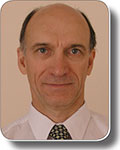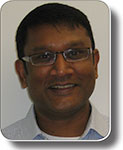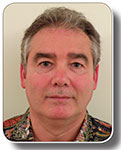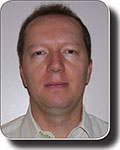The Hermes oil field: a small field takes wings
Greg C Smith A , Jai Louis A , Roy White A , Ritu Gupta B and Roger Collinson BA Woodside Energy
B Curtin University of Technology
The APPEA Journal 49(1) 221-242 https://doi.org/10.1071/AJ08014
Published: 2009
Abstract
The Lambert field was discovered in 1973 with oil reservoired in Tithonian turbidites. It was viewed as uneconomic until 1996 when re-evaluation led to discovery of the adjacent Hermes oil accumulation by Lambert–2. The Lambert–3 producer was drilled nearby to Lambert–2 in 1997 and tied back to the Cossack-Pioneer floating production storage offloader (FPSO). Lambert–3 was expected to drain about 25 MMBBLs of oil, coming off plateau after one year and declining substantially thereafter; however, it had produced more than 52 MMBBLs of oil by late 2008 without any water cut and may produce much more in the next 15–20 years. In contrast, several appraisal and production wells drilled since in the adjacent Lambert accumulation have only produced modest recoveries. Why were the original deterministic views of the Lambert-Hermes field so far from present estimates?
This paper describes the approach taken to re-assess the Lambert and Hermes oil accumulations. First, the traps were reviewed by framing the main uncertain variables followed by a rigorous scenario analysis of the field. The work was expedited by using a statistical design to substantially reduce the number of scenarios required for modelling and simulation. The results included a statistical analysis and produced a better view of the probable reserves ranges.
Remarkably, after 11 years’ production the field potential warranted re-appraisal. The scenario analysis indicated which uncertain variables needed attention and helped to select well locations. The results of appraisal should decide between several re-development options. The main possibilities for new field development include: drilling of additional oil producers; water shut-off in some producers; an additional flow-line to de-bottleneck oil production from Lambert and Hermes; re-instatement of a gas-injection line for gas-lift of wells at high water-cut; and installation of a new manifold further north in the Hermes accumulation to optimise field recovery.

Greg Smith is principal geologist in development, Woodside Energy Ltd. He obtained BSc (Hons) from the University of NSW in 1972 and a PhD from Wollongong University for Gippsland Basin modelling. He has enjoyed a varied career first as research geologist on a coal to oil project for the State Electricity Commission of Victoria; project geologist for Esso; regional geologist and exploration manager for Arco; and new ventures co-ordinator, exploration manager and division geologist for BHP Petroleum from 1984 to 1995. Since then he has worked at Woodside as principal geologist on the exploration, appraisal and development of fields in the Woodside portfolio in a variety of Australian and overseas basins. His prime interests are in 3D interpretation, characterisation and modelling of the subsurface. Member: PESA, GSA, AAPG, ASA and ICCP. Gregory.smith@woodside.com.au |

Jai Louis is a principal reservoir engineer in the North West Shelf Oil Development group for Woodside Energy Ltd. Jai has a Masters in petroleum engineering from Imperial College London (1991). Prior to working in Australia, Jai worked for the Royal Dutch Shell Group in Malaysia and the Netherlands across a wide range of projects encompassing mature and green-field oil and gas fields, primary and secondary recovery mechanisms as well as offshore and onshore environments. Jai has worked at Woodside since 2005 as a reservoir engineer previously on the Angel gas field and moved onto his current role in 2007. Member: SPE. Jai.louis@woodside.com.au |

Roy White is a principal geophysicist seconded to the North West Shelf Oil Development group of Woodside Energy Ltd by The Shell Company of Australia. Prior to working in Australia, Roy worked for the Royal Dutch Shell Group and Sable Offshore Energy Inc across a variety of exploration and development projects primarily in Canada’s frontier areas. Prior to joining Shell in 1987, Roy gained nine years experience as a seismologist in the geophysical service industry. Member: SEG, CSEG, and ASEG. Roy.white@woodside.com.au |

Ritu Gupta is a senior lecturer in the Department of Mathematics and Statistics at Curtin University of Technology. She obtained a Masters in 1989, followed by PhD in 1994, both in the area of statistics from Delhi University, India. Since then she has worked in a range of academic and consulting positions, first as lecturer in Delhi University, then research officer at Statistical Consulting Unit, University of Western Australia. She subsequently joining Curtin University of Technology in 2000. Ritu has written more than 30 consulting reports for various government departments and industries in Australia. She has presented at several international conferences and has published many papers in refereed journals. Over the past decade she has worked on developing statistical methods for efficient reserves estimation in petroleum engineering applications. This work has resulted in over 15 research papers, two PhD supervisions and software development. Accredited member: Statistical Society of Australia. r.gupta@curtin.edu.au |

Roger Collinson is research fellow in the Department of Mathematics and Statistics at Curtin University of Technology. He lectures in statistics and also works for the Statistical Consulting Unit (SCU) in the department. He has been involved in a range of projects including statistical modelling of water quality and reserves estimation in petroleum engineering. He obtained a BSc (Hons) in 1993 and a PhD in applied mathematics in 1998, both from Curtin University of Technology. Following this, he worked as a research associate in the Western Australian Centre of Excellence in Industrial Optimisation on effective optimisation techniques for open-pit mine scheduling problems. He was a full time mathematics lecturer in the department in 2005 and in 2006 worked for a year at the School of Marketing on a non-linear programming problem for the retail industry. r.collinson@curtin.edu.au |


